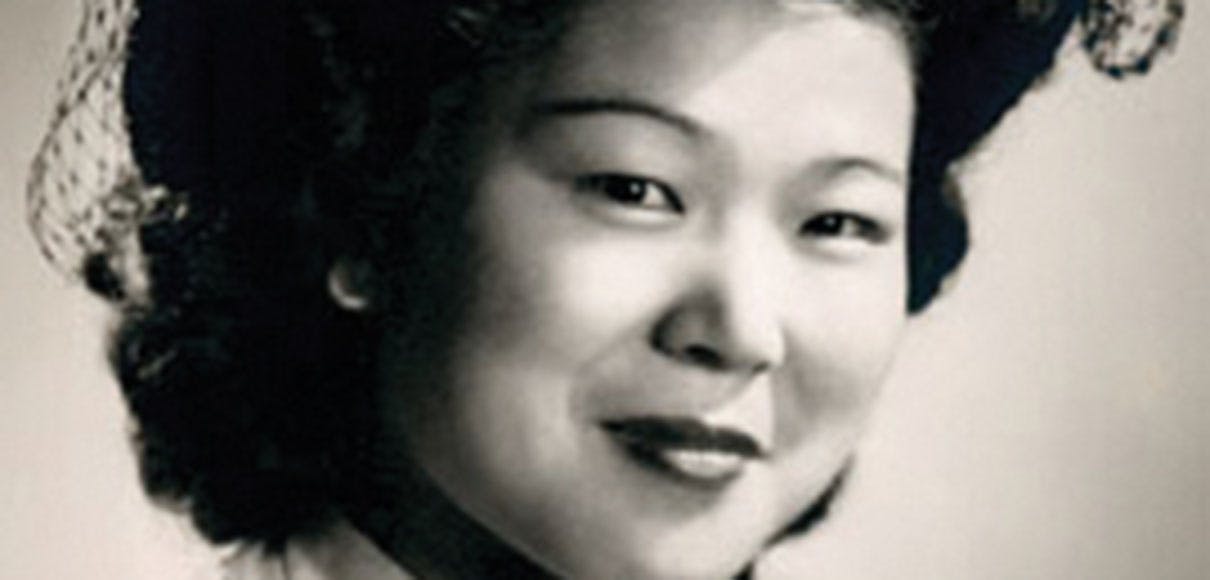On Feb. 22, 1942, President Franklin D. Roosevelt signed Executive Order 9066, marking the beginning of the Japanese American internment when more than 110,000 Americans of Japanese ancestry were rounded up and sent to isolation centers across the United States. As we draw close to the 80th anniversary of that order, we share the story of Toshiko Senda, an SPU student who almost missed her graduation ceremony after she was sent to a relocation center during the war.
 Toshiko Senda was a senior at SPU, looking forward to graduation, when President Franklin D. Roosevelt signed Executive Order 9066 just months after the Japanese attack on Pearl Harbor.
Toshiko Senda was a senior at SPU, looking forward to graduation, when President Franklin D. Roosevelt signed Executive Order 9066 just months after the Japanese attack on Pearl Harbor.
Senda was one of more than 110,000 Japanese Americans rounded up and placed in isolation centers across the country. She was relocated to the Western Washington Fairgrounds in Puyallup, Washington, euphemistically coined, “Camp Harmony,” where its 7,390 residents stayed before they were transferred to relocation camps in Idaho, Wyoming, and California.
Senda’s letter to SPU President C. Hoyt Watson was a plea for help to enable her to attend her own graduation ceremony. She had been incarcerated for almost a month and was making the most of a bad situation.
“[I need a] written request from you stating that you would like to have me attend the Commencement Exercise,” Toshiko Senda wrote in a letter to Seattle Pacific University’s president C. Hoyt Watson in 1942.
“There is no formal education, but we are planning for a daily vacation church school,” Senda wrote. “We do, however, have Sunday school and church services. We have choir practice, concerts (records), a very good athletic program, recreation and are now starting interest groups. I’m sure gradually we will have more.”
Senda had a special request. Camp officials told her she could attend her commencement ceremony if someone provided her transportation and agreed to be her custodian while away from the camp.
“Another requirement which I need to ask of you is that I have a written request from you stating that you would like to have me attend the Commencement
Exercise,” Senda wrote. “I certainly more than appreciate your doing all this for me. It is asking a great deal but I know you will cooperate. Thank you very much. Another thing, too, will you please arrange about my cap and gown?”
SPU President Watson wrote the incarceration camp manager just a few days later. It was June 1, and graduation was just seven days away.
“Although it was necessary for her to leave school a few weeks before Commencement, by vote of our faculty she is being graduated,” wrote Watson. “We are very anxious for Miss Senda to be present to receive her diploma and degree. It would be necessary for her to be here by 9:30 a.m. I understand that it may be possible for her to be released for this occasion provided we arrange for a custodian and for her transportation. This we shall gladly do. Mr. William Hunter, assistant pastor and education director at the College Church, will be such custodian and will come after her and bring her back.”
In 2004, Response published Senda’s story and several former classmates wrote in describing the commencement ceremonies. Tim Nelson, professor of biology, said his mother, Elsie, graduated with Senda and talked about it a lot.
“I heard the story about Dr. Watson arranging for Toshi to be at graduation retold many times by my mom, who held her cap and gown for her as the students
lined up for the processional. She arrived just in time to put on the cap and gown and walk with her class.”
Another classmate that year said President Watson gave the audience some background information and when Senda walked across the stage, “The applause
went on almost interminably. It was an unforgettable experience.”




